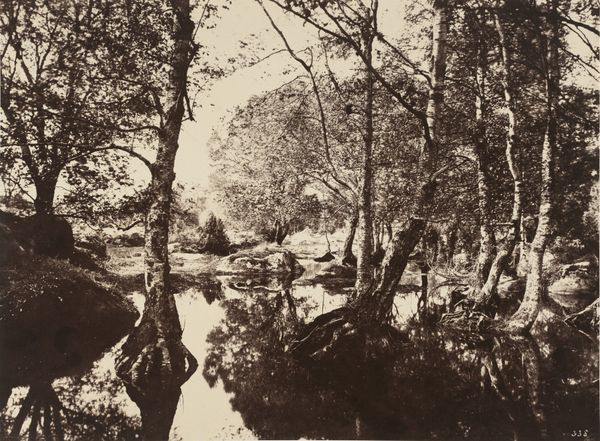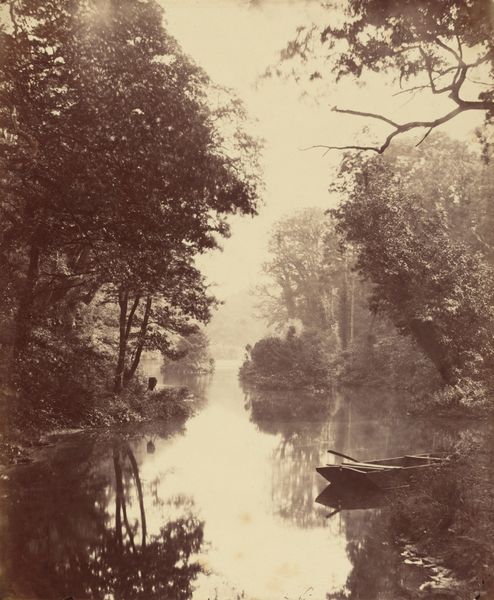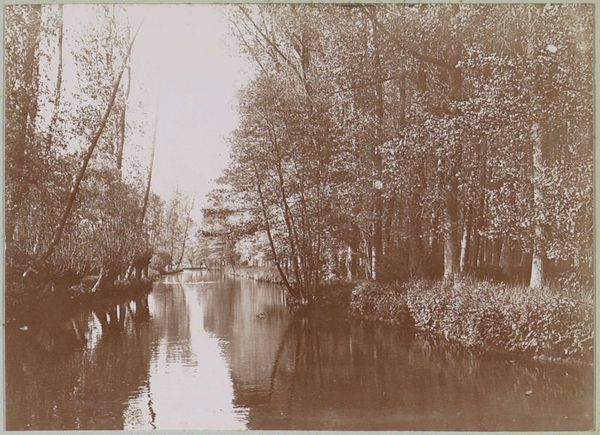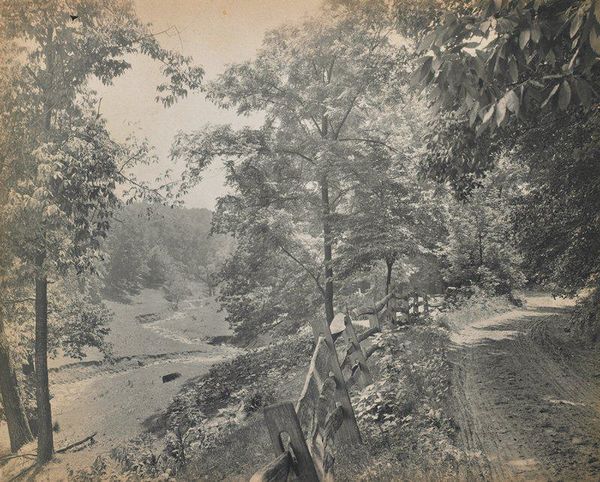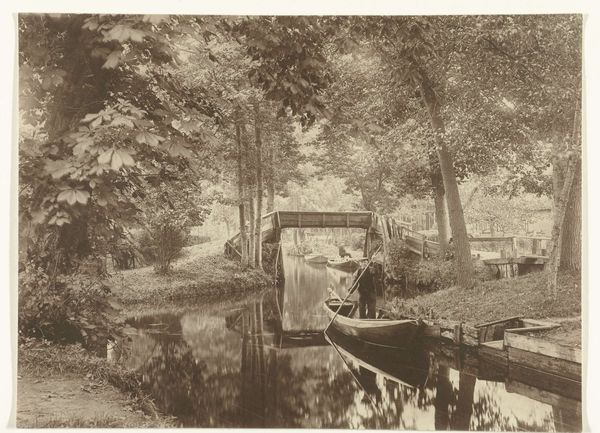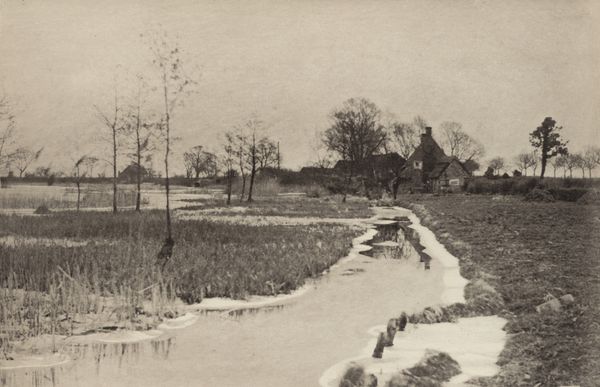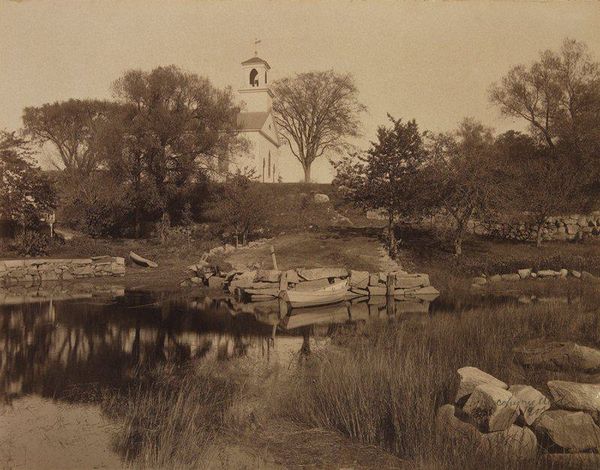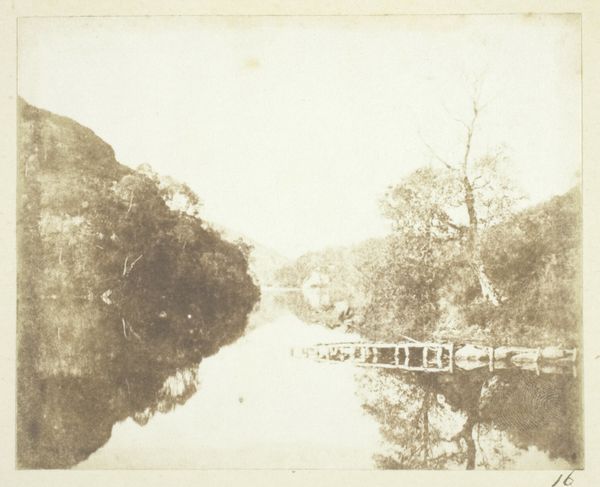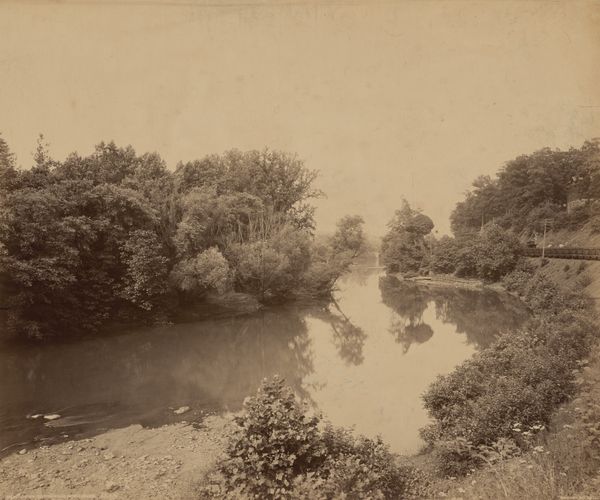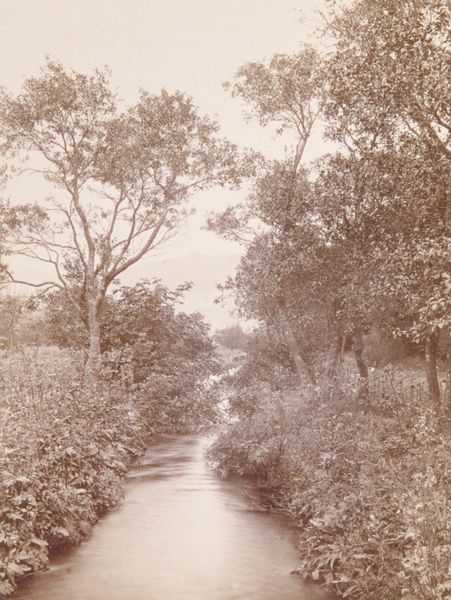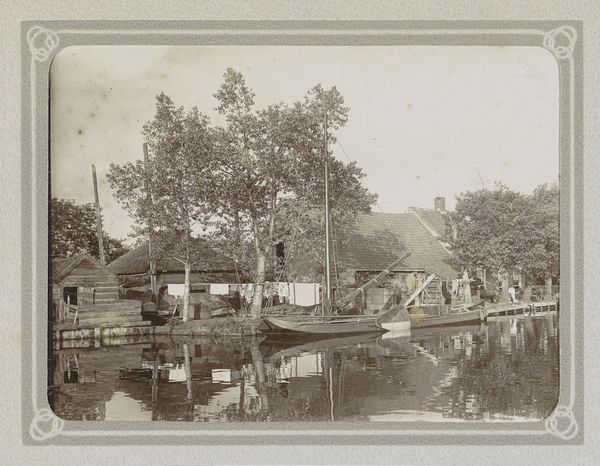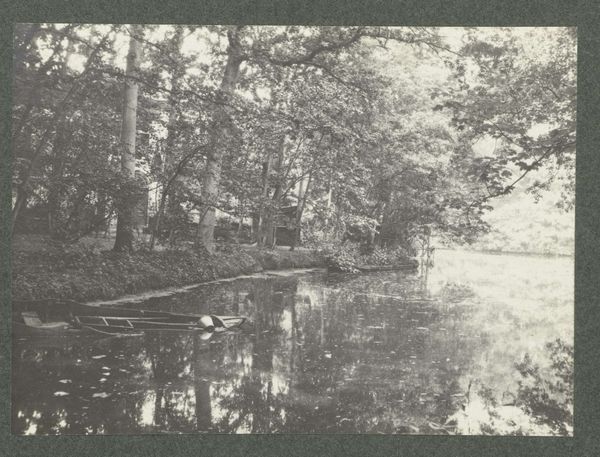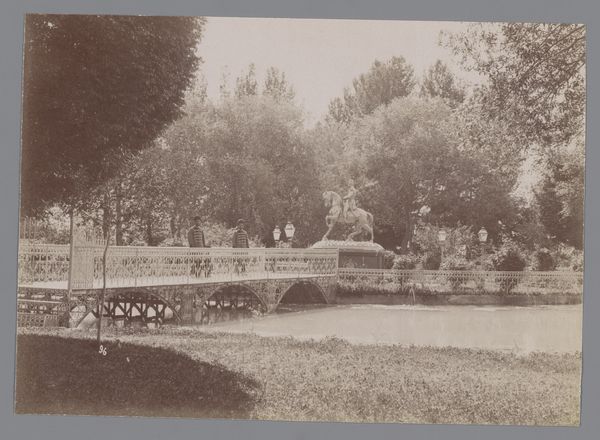
Lovers' Lane Bridge over the Ashuelot River c. 1880s
0:00
0:00
albumen-print, photography, albumen-print
#
albumen-print
#
pictorialism
#
landscape
#
photography
#
albumen-print
#
realism
Dimensions: 4 9/16 x 7 5/8 in. (11.59 x 19.37 cm) (image)5 x 8 1/4 in. (12.7 x 20.96 cm) (sheet)7 15/16 x 10 11/16 in. (20.16 x 27.15 cm) (mount)
Copyright: Public Domain
Editor: This albumen print, "Lovers' Lane Bridge over the Ashuelot River" by Jotham Abijah French, from the 1880s, has this lovely, sepia-toned feel. There's a definite rustic quality to it; you can almost smell the damp wood and river. What's your perspective on it? Curator: As a materialist, I'm drawn to consider this photograph not just as a representation of a landscape, but as an object resulting from a particular set of material conditions and production processes. Albumen prints like this one involved coating paper with egg whites, a process laborious and time-consuming. How do you think this tangible effort alters our interpretation? Editor: That's a fascinating point! It shifts the focus. We're not just looking at a pretty scene, but also at the craftsmanship, and the physical effort behind its creation. The very choice of using this process... Curator: Exactly! It elevates what could be a simple snapshot of rural leisure to a higher level. This also points towards the economic and social implications involved in accessing these photographic processes and equipment in the 1880s. Does knowing the social context add a new layer of depth? Editor: Absolutely. It becomes about who had the resources to commission or create these images and how that shaped what was deemed worthy of being photographed. How does considering it a work of material craft affect how it stands alongside other arts from the period? Curator: I think it bridges the gap between photography and traditional artistic practices. It compels us to see beyond surface aesthetics and scrutinize the intricate processes of production and consumption shaping art making then and now. Considering the manual labor brings value in photography that we normally attribute to 'fine art'. Editor: It gives the photograph a unique kind of weight. I will think about this print quite differently now, seeing not just the scene, but also labor behind it and implications tied to it. Thanks. Curator: Likewise. It's always enriching to contemplate art through lenses of material and making. It highlights how the mundane can actually illuminate and elevate meaning!
Comments
No comments
Be the first to comment and join the conversation on the ultimate creative platform.
